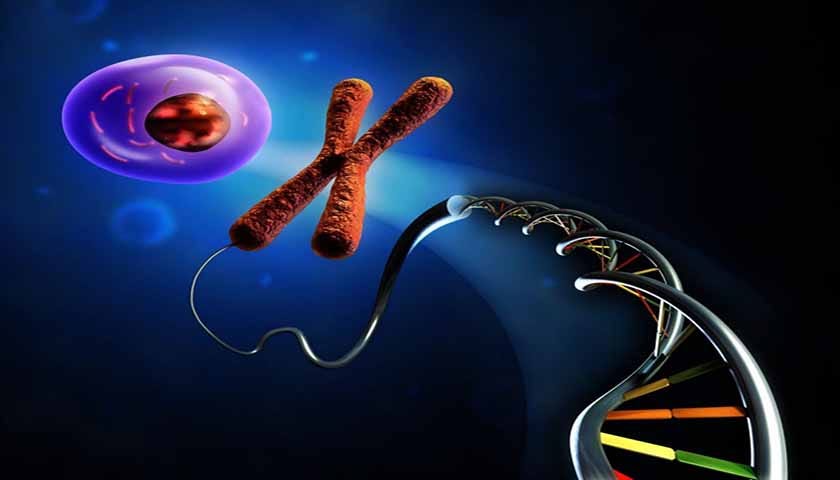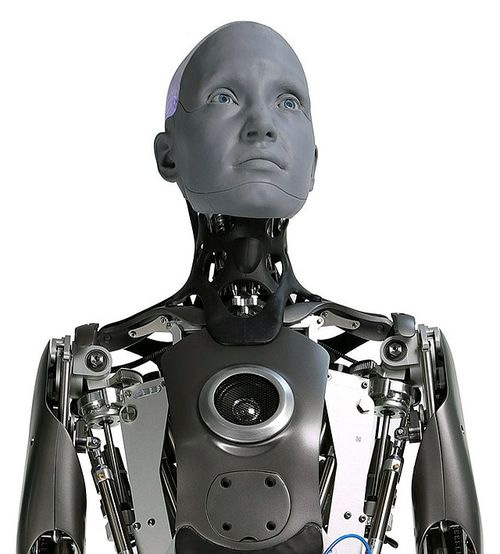I also very much recommend listening to this speech by Rupert Sheldrake on the same topic: Science Delusion. It is not specific to the claims of “synthetic biology”, but it is a great example how science dogma, and its product - misleading delusionary (not tied to reality) language lead into hubristic thinking:
The idea of “synthetic biology” is based on a delusionary - deeply flawed, mechanistic - approach to biology and life in general. It is delusional as it is based on indirect observations, modeling, cartoons, and, in more recent years, outright fraud for financial/power gains. As an approach to solving mysteries of the natural world it is a guaranteed dead end.
This is an interesting review paper on synthetic biology published in Nature:
This paper explains that “synthetic biology” comes in two broad classes:
Using unnatural molecules to reproduce emergent behaviors from natural biology, with the goal of creating artificial life.
Seeking interchangeable parts from natural biology to assemble into systems that function unnaturally.
In my opinion, both approaches are ultimately doomed to failure. Once you throw away the science verbiage and look at practicalities, the first approach discussed in the Nature article boils to making “chemical automata”, or robotic systems. Superficially, this seems possible, because mechanical and electronic robotic systems do exist and are used widely. The robots can fulfill many tasks and are increasingly designed to resemble human features. The latter is wholly unnecessary for any task they perform, and is an irrational, psyop-ey design choice (it is unnecessarily expensive, too).
This is just as dumb as trying to make a motor vehicle looking like a horse! However, all that clever engineering does not make electromechanical robots any closer to real live humans. It only makes some creepy looking robots…
It should be noted that the electromechanical robot-design approach indeed produced some beneficial products for bio-medical applications such as advanced prosthetics, implanted devices (pacemakers, defibrillators) and surgical systems. This category can produce benefit, as long as the design objective is to NOT integrate with the living body. Some artificial materials are “bio-compatible” specifically because they do not integrate. The body can safely tolerate (ignore) them, i.e. it can create a safe, permanent barrier between itself and the device (internal or external) and thus maintain its own living integrity. Having successful pacemakers and prosthetic devices available is a good thing, but these are examples of successful medical devices, not anything alive, and not anything close to “synthetic biology”.
The second approach to “synthetic biology” listed in the Nature paper is a colossus on clay legs - it is built on the assumption that, just like with mass produced electro-mechanical devices, there are discrete, separable, standardizable, i.e. “interchangeable” parts (modules) in living organisms, and these parts can be manufactured de-novo, and then integrated into the body to induce some “unnatural” function.
This idea is extremely problematic. There are no separable, standardizable components of living bodies, yet the entire field of “synthetic biology” is built on the made-up assumption that they exist. Unlike in mechanical or software engineering, there is no possibility of “plug-and-play” with human or animal organism. The “bio-components” used in biological sciences (e.g., concepts of DNA, RNA, proteins, etc) are largely indirectly derived, averaged mathematical models, i.e. an idea of what an average might look like, which is not representing any specific living organism. Kind of like an AI-generated human face: it looks “real”, but no such person exists in the world!
One of the main hallmarks of nature is the infinite variety of the same thing. Leaves of a single tree are ALL DIFFERENT while simultaneously being recognizable as the same type of leaf, from the same species of tree. DNA or RNA are unique to every living thing with variations in space, time, and many varying conditions that are not well understood, nor standardizable, nor replaceable by any means other than their source, the organism itself.
You cannot stick a synthetic leaf on a living tree and make it compatible with or useful to the body of the tree. Yet, thousands of otherwise intelligent scientists, “experts” in the field, claim that they can do just that with invisible to the eye “synthetic biology” products! Living things are not Minecraft characters, they are fully and uniquely integral, and it is quite possible that they are all part of one integral entity connected to the source of all creation.
I personally believe the source of the living matter is not contained in the body, it is located elsewhere. I believe that location is God, and we, material beings, only “read” the local copies of natural things here, in the material plane. This is the reason why I do not really buy into the terminology of genetic vaccines “modifying” human or animal genomes. They can only damage and destroy the local copies of the genome inside the cells, possibly cause damage to the subsequent generation (and terminate the reproduction down the line), but they cannot access the source of the genome. Thus they cannot “modify” the genome. The damage is either mitigated/cured by expelling the damaged cellular parts, or, if too many cells are damaged, the body dies. For the same reason, I do not believe humans are controllable by “nanobots”. While it is of course possible to injure and kill people with injected or otherwise introduced foreign matter (e.g. asbestos- a nanomaterial, or injected nanoscale objects containing wires and circuits), control over the conscious mind can only be surrendered voluntarily, and enslavement or liberation of the mind starts with words.
Thus, God always wins and His design is the only viable true, unmodifiable life form.
The origin of natural science is philosophy. Philosophy literally means “love of truth/wisdom”. I have worked with hundreds of scientists in my professional career, and I can attest that, with some rare exceptions, these people went into the science field because they loved to acquire knowledge about the natural world, had intellectual curiosity, wanted to know the truth about our world, and wanted to help make it better. I can also state with certainty that regardless of the intellectual brainpower, the scientist will fail to become a true philosopher if he/she does not humbly acknowledge that the natural world, designed by God is ultimately NOT knowable by mortal humans. The current educational system, academia, commercial science, medicine and media all instill the arrogance of thinking that it is knowable, controllable, solvable, fixable and improvable. This arrogant approach is the road to hell financed by evil people and paved by good intentions of idealists.
The opposite of a philosopher is not a stupid person, it is a sophist - a professionally wise man. He also professes love for the truth, but instead of seeking it while understanding his limitations, this person is under a false impression that he owns it! Therefore, “synthetic biology” is sophistry, not philosophy.
Now to some examples of practical vocabulary:
Below are some short definitions of frequently used words in the area broadly termed “synthetic biology”, which may help you start deciphering bullshit from “trust the science” crowd. This is by no means a full list of terms, it’s just a starting point. I was asked to make a list of terminology for lawyers and legislative activists working in the area of vaccines and I though it was useful to share. This will hopefully help you distinguishing real from fake.
Definitions used in descriptions of genetic vaccines (any vaccines that utilize synthetically derived nucleic acids either as raw material, intermediate manufacturing steps or as final product). This applies generally to the following categories of vaccines but is not limited to this list. Due to innovation and recategorizations in scientific literature, this list should be revised and updated from time to time.
Plasmid DNA vaccines
Recombinant protein vaccines
Chimeric protein vaccines
Chimeric viral vaccines
Viral-vector vaccines
NA replicon vaccines
Definitions:
Natural Nucleic Acids: naturally occurring chemical compounds deoxyribonucleic acid (DNA) and ribonucleic acid (RNA). These natural molecules direct the production of proteins, the body’s building blocks in all living organisms and are found in all living cells.
Artificial, Recombinant or Synthetic Nucleic Acids: Recombinant or synthetic nucleic acid (r/sNA) molecules are man-made, i.e. constructed using synthetic chemistry approaches outside of living cells and/or using intermediate commercial cell lines which are not representative of the cells that will be the target recipient of the product (humans or animals to be vaccinated). They are made by joining DNA or RNA segments (natural or synthetic) to DNA or RNA molecules that can replicate within a living cell. They may also result from replication of previously constructed recombinant molecules. Synthetic RNA or DNA molecules can also include artificial modifications that are not found in natural DNA and RNA.
Natural DNA Plasmid: a short piece of natural DNA which is not part of the chromosomes in the cells, i.e. free-floating small portion of the DNA. These pieces can replicate independently and can be passed from one host to another. This frequently occurs among bacterial cells, including the bacterial cells residing in the gut of animals of humans (e.coli and other gut bacteria).
Artificial DNA Plasmid: an artificially created DNA molecule (a DNA construct) that is an artificially designed segment of DNA borne on a vector. A DNA construct contains a DNA sequence of interest, called a “transgene”, and several additional features that allow the sequence to be manufactured, replicated and/or expressed in the target cell, thus transferring the sequence encoded by the plasmid to the target host. This “transgene” carried by the plasmid can be cloned (derived) from a naturally occurring gene, or synthetically constructed. The vector which carries the transgene can be delivered using physical, chemical, or viral methods.
Viral Vectors: are tools commonly used by molecular biologists to deliver genetic material into cells. Most commonly used vectors include synthetic recombinant viruses, such as adenovirus, lentivirus, or tobacco mosaic virus, however they may include viruses such as flavivurus (family associated with West Nile, zika, yellow fever), measles virus, and rhabdavirus (family associated with rabies and encephalitis). When used as viral vectors for making recombinant proteins or vaccines, these viruses are supposed to be synthesized as replication incompetent. Concerns of recombination or gaining replication capability/virulence are a major issue associated with use of viral vectors in molecular biology.
Chimeric Viral Vectors: are vector viruses that are genetically engineered to have qualities of more than one vector. Viruses are altered to avoid the shortcomings of typical viral vectors to modify their properties for purposes of increasing transfection, stability, manufacturability. These engineered vectors are also associated with concerns with recombination and gaining virulence due to unpredictable interactions of various parts of the engineered vectors and transfer to off-target species of animals, bacteria, plants.
Self-Replicating RNA Vectors: Replicon RNA vaccines encode not only antigen genes but also the genes necessary for RNA replication. These products utilize “replicons” - self-replicating RNA viruses engineered as gene delivery vectors, which can be applied in the form of recombinant particles, RNA replicons and layered DNA plasmid vectors.
Go paid at the $5 a month level, and we will send you both the PDF and e-Pub versions of “Government” - The Biggest Scam in History… Exposed! and a coupon code for 10% off anything in the Government-Scam.com/Store.
Go paid at the $50 a year level, and we will send you a free paperback edition of Etienne’s book “Government” - The Biggest Scam in History… Exposed! OR a 64GB Liberator flash drive if you live in the US. If you are international, we will give you a $10 credit towards shipping if you agree to pay the remainder.
Support us at the $250 Founding Member Level and get a signed high-resolution hardcover of “Government” + Liberator flash drive + Larken Rose’s The Most Dangerous Superstition + Art of Liberty Foundation Stickers delivered anywhere in the world. Our only option for signed copies besides catching Etienne @ an event.








The current "scientists" tinkering with the basic fabric of Nature remind me of the brat trying to repair his dad's watch with a sledgehammer ...
To quote A. Einstein: "Most probably, there's a boundary to the universe, but what I know for sure, is that man's stupidity has none" ...
Scientists of the 17th to 19th century were mainly of aristocratic origin, had undergone a one-to-one tuition and researched for knowledge, not profit, backed by their family wealth only. This lead to enormous discoveries to the benefit of most of humanity.
Scientists from the 20th century were mainly backed by state-institutions in order to advance nationalistic goals and current ones are mainly funded by global corporations or obscure entities for entirely selfish and private (shareholder) purposes.
With VERY few exemptions, current scientists have morphed into 24/7/365 money-whores. Most probably I should include also the health/medical professions into this category ...
Thank you for this, Sasha - a bit of sanity that I definitely needed today <3
Thanks for the Sheldrake talk too, it's brilliant - I know Rupert - he's a genius and also a really nice man, very cool, with a lovely wife, and two sons made in his image!